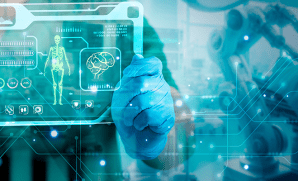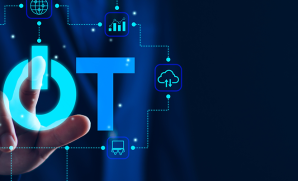The Future of Autonomous Vehicles: How IoT Will Make Them a Reality
Publish Date: October 9, 2023The concept of self-driving cars dominating our roadways has captivated the attention of the automotive industry ( and the general public) for quite some time. Renowned companies like BMW, Tesla, and Waymo are harnessing the power of Artificial Intelligence (AI) and the Internet of Things (IoT) to bring these autonomous vehicles to fruition. According to McKinsey, this technological breakthrough holds tremendous significance. By 2035, self-driving cars could generate a massive revenue of $300 billion to $400 billion. This discovery highlights the immense potential and pivotal role that IoT is likely to play in revolutionizing the transportation industry.
The IoT-Powered Evolution of Autonomous Vehicles
Although fully autonomous vehicles may not yet be a reality, the Internet of Things (IoT) is already propelling the automotive industry forward with significant advancements in developing semi-autonomous vehicles. This revolutionary technology is set to transform our understanding and interaction with automobiles. By examining how IoT overcomes critical challenges faced by autonomous vehicles and unlocks incredible benefits, we can gain a deeper appreciation for its potential impact on the automotive industry.
Challenges Autonomous Vehicles Face Without IoT
Imagine a world where self-driving cars are not connected through IoT. In such a scenario, these vehicles would operate in isolation and cannot access the essential information necessary for safe and efficient navigation. The absence of IoT would result in several significant challenges.
Data Deprivation: Autonomous vehicles demand extensive data for their safe operation. This includes real-time information about road conditions, traffic patterns, and potential obstacles. Without IoT, the ability to continuously share and receive this vital data would be severely
Delayed Response to Obstacles: IoT connectivity empowers self-driving cars to process sensor data promptly and make instantaneous steering, acceleration, and braking decisions. Without IoT, these vehicles would struggle to respond swiftly to unforeseen obstacles or changes in traffic dynamics.
Absence of Predictive Modeling: IoT-driven predictive modeling is a game-changer for autonomous vehicles. It enables them to anticipate and respond to potential hazards, adhere to traffic regulations, and precisely navigate obstacles. Without IoT, the predictive capabilities that enhance safety and reliability would be sorely lacking.
The Internet of Things plays a pivotal role in addressing these challenges and fueling the advancement of autonomous vehicles. IoT connects these vehicles to a vast network of devices and data sources, creating a seamless flow of information that is indispensable for their operation. Here’s how IoT brings remarkable benefits to autonomous vehicles:
- Data Connectivity: IoT continuously allows autonomous vehicles to refine their algorithms based on user data. These vehicles tap into a wealth of information, including real-time road conditions, traffic updates, and potential obstacles. This data is seamlessly shared through IoT, enabling the vehicle to make informed decisions and adapt to its surroundings in real-time.
- Real-Time Decision Making: With IoT, the connectivity between the car’s sensors, cloud-based systems, and central processing unit is seamless. Sensors collect data from the vehicle’s surroundings and share it with the cloud or main unit, where it is analyzed swiftly. This enables the car to make split-second decisions, ensuring the safety of passengers and pedestrians.
- Adaptive Navigation: IoT-powered autonomous vehicles possess the capacity to adjust their routes and actions based on real-time data dynamically. Whether avoiding traffic congestion, re-routing due to road closures, or responding to unexpected obstacles, IoT ensures that these vehicles navigate efficiently and safely.
To make the most of the Internet of Things (IoT), having a reliable and knowledgeable partner who can help you unleash its full potential is essential. That’s where YASH Technologies comes in. Our Embedded and IoT services range from end-to-end embedded systems development, IoT systems development and implementation, and factory automation. Let’s take a look at a recent success story.
A User Case Scenario
The client, a leading European manufacturer, leads the charge towards safer and more sustainable electronic vehicles and connected cars. Their Head-up display (HUD) solution creates a seamlessly connected environment using IoT technology to provide unique in-car mobility experiences. To cater to their global clientele in the automotive industry, they continually integrate the latest automotive-display technologies, both in hardware and software. As the industry shifted from hardware to experience provision, the client saw the need to optimize their HUD offering. To know more about our IoT service offerings in the automotive space, connect with us at info@yash.com

















